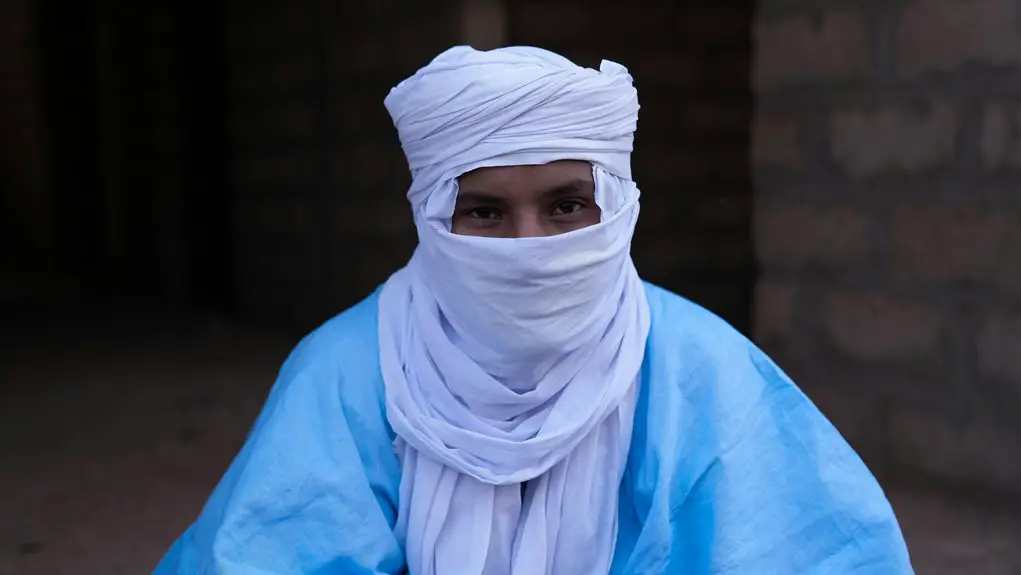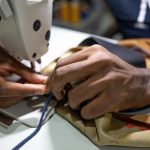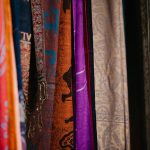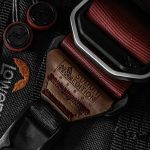You can trust coated Kevlar fabric to give you exceptional protection against harsh elements and daily wear while staying lightweight and durable. The coatings, like polyurethane and silicone, boost water resistance, heat protection, and chemical resistance without sacrificing flexibility. This makes it ideal for tough jobs, from body armor to outdoor gear. It also extends the fabric’s lifespan with easy maintenance. Explore how specific coatings and uses can enhance your Kevlar’s performance even more.
Table of Contents
Key Takeaways
- Coatings like polyurethane and fluoropolymer enhance Kevlar’s resistance to moisture, chemicals, and abrasion for superior environmental protection.
- Coated Kevlar fabric maintains its exceptional strength while improving flexibility and water repellency in harsh conditions.
- Silicone coatings increase heat resistance, making Kevlar suitable for high-temperature protective gear like firefighter suits.
- UV-resistant acrylic coatings prolong fabric lifespan by preventing sun damage and color fading during outdoor use.
- Proper maintenance, including gentle cleaning and storage, preserves coated Kevlar’s durability and protective properties over time.
Properties of Kevlar Fabric
Although you might already know Kevlar for its strength, its unique properties go beyond just durability.
You’ll find that Kevlar is incredibly lightweight, making it easy to handle without sacrificing protection. It resists heat exceptionally well, so it doesn’t melt or degrade under high temperatures, which is vital in many demanding environments.
You’ll also appreciate its excellent chemical resistance—it won’t break down easily when exposed to oils, solvents, or other harsh substances.
Kevlar’s high tensile strength means it can absorb and disperse energy efficiently, providing superior impact resistance. Plus, it has low stretch, which helps maintain shape and integrity under stress.
These combined properties make Kevlar a versatile fabric, perfect for applications where protection and performance are essential.
Types of Coatings Used on Kevlar
Several types of coatings enhance Kevlar fabric’s performance for different uses. You’ll find polyurethane coatings add flexibility and water resistance, making the fabric suitable for outdoor gear. Silicone coatings improve heat resistance, perfect for protective clothing. Acrylic coatings boost UV resistance and color retention, ideal for applications exposed to sunlight. Fluoropolymer coatings provide chemical resistance, which is essential in industrial environments.
| Coating Type | Key Feature | Typical Use |
|---|---|---|
| Polyurethane | Water resistant | Outdoor gear |
| Silicone | Heat resistant | Protective clothing |
| Acrylic | UV resistant | Sun-exposed fabrics |
| Fluoropolymer | Chemical resistant | Industrial applications |
Choosing the right coating depends on the specific challenges your Kevlar fabric will face.
Benefits of Coating Kevlar Fabric
Selecting the right coating for your Kevlar fabric directly impacts its durability and functionality.
When you coat Kevlar, you enhance its resistance to abrasion, moisture, and chemicals, ensuring it lasts longer under tough conditions. Coatings also improve the fabric’s flexibility without compromising strength, making it more comfortable to wear or use.
You’ll find that coated Kevlar resists UV damage better, so it won’t degrade quickly when exposed to sunlight. Additionally, coatings can add water repellency, helping keep the fabric dry and lighter in wet environments.
Applications in Protective Gear
When you choose coated Kevlar fabric for protective gear, you get enhanced strength and durability that stand up to extreme conditions. This fabric is perfect for body armor, offering reliable ballistic protection while remaining lightweight and flexible enough for comfort.
Firefighters and rescue workers benefit from its heat resistance and chemical protection, allowing you to stay safer in hazardous environments. Coated Kevlar also resists abrasion and moisture, making it ideal for gloves, helmets, and footgear you rely on daily.
Whether you’re in law enforcement, military, or emergency services, the added coating improves the fabric’s lifespan and performance without compromising mobility. With coated Kevlar, your protective gear not only shields you effectively but also endures the wear and tear of demanding situations.
Industrial and Outdoor Uses
Coated Kevlar fabric serves up unmatched durability and resistance for industrial and outdoor applications.
Coated Kevlar fabric delivers exceptional strength and protection for tough industrial and outdoor environments.
When you need gear that withstands harsh environments like construction sites or rugged outdoor adventures, this fabric has your back. Its high tensile strength resists cuts and abrasions, making it ideal for protective clothing and equipment covers.
You’ll also appreciate its resistance to heat and chemicals, which keeps you safer in hazardous industrial settings.
Outdoors, coated Kevlar stands up to UV rays, moisture, and rough terrain, so your gear lasts longer.
Whether you’re handling tools, working with machinery, or exploring nature, this fabric enhances protection and reliability.
It’s a smart choice that helps you stay safe and comfortable without compromising performance.
Maintenance and Longevity of Coated Kevlar
Although Kevlar fabric is designed for durability, proper maintenance is key to extending its lifespan and performance.
You should clean coated Kevlar with mild soap and cold water, avoiding harsh chemicals or bleach that can degrade the fibers and coating. After washing, air dry it away from direct sunlight to prevent UV damage.
Store your Kevlar items in a cool, dry place to avoid moisture buildup, which can weaken the material over time.
Inspect regularly for signs of wear or damage, especially on the coated surface, and repair minor tears promptly to prevent them from worsening.
Frequently Asked Questions
How Is Coated Kevlar Fabric Manufactured?
You start by weaving Kevlar fibers into fabric, then apply a protective coating like polyurethane or silicone. This coating bonds tightly, boosting durability and resistance, so you get stronger, longer-lasting material for tough conditions.
Can Coated Kevlar Be Recycled or Repurposed?
You can’t easily recycle coated Kevlar due to its tough composite structure, but you can repurpose it creatively—for example, turning old fabric into durable bags or protective gear, giving it a second life instead of discarding it.
Are There Environmental Concerns With Coated Kevlar Production?
You should know that producing Kevlar consumes significant energy, contributing to environmental concerns. While it’s durable, its production emits greenhouse gases. You can reduce impact by supporting recycling efforts and choosing sustainable alternatives when possible.
How Does Coating Affect Kevlar’S Flexibility?
Coating can reduce Kevlar’s flexibility slightly because it adds a stiff layer, but you’ll still find it quite durable and flexible overall. The key is choosing the right coating to balance protection and movement for your needs.
What Are the Cost Differences Between Coated and Uncoated Kevlar?
You might think coated Kevlar is too pricey, but it actually costs more upfront than uncoated Kevlar due to added materials and processes. However, its durability often saves you money by reducing replacements and repairs over time.
- Tetron Fabric Vs Other Fabrics: a Comparative Analysis - June 17, 2025
- Creative Uses for Tetron Fabric in Fashion and Home Decor - June 17, 2025
- Tetron Fabric HS Code: Import and Export Information - June 17, 2025







